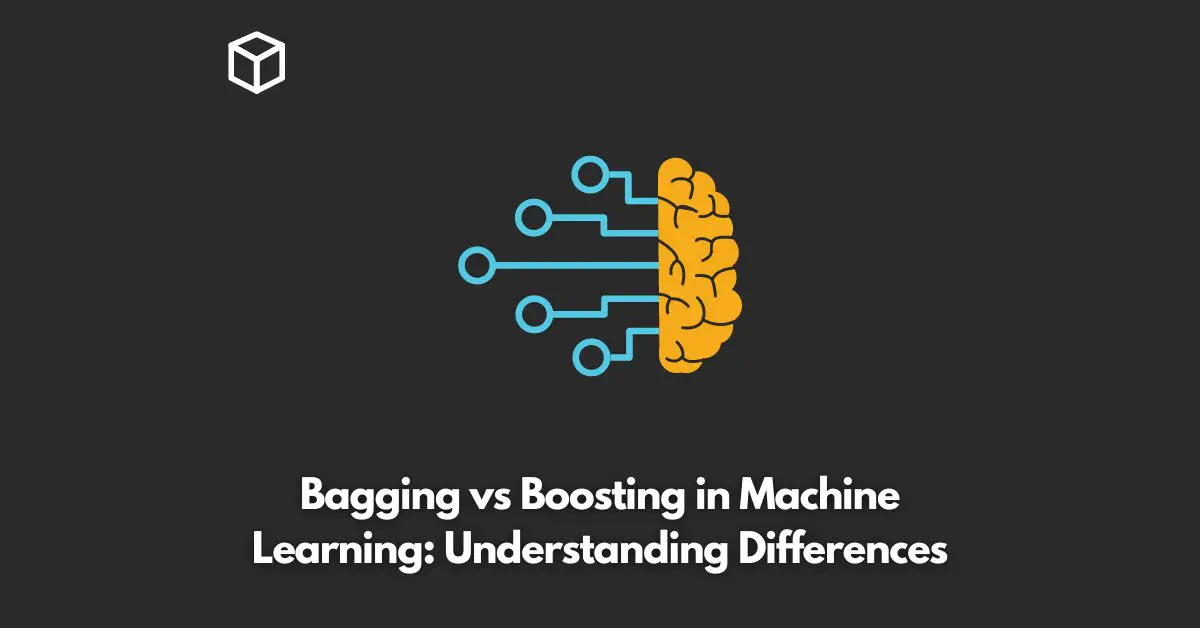As a software developer, you have probably heard the terms “bagging” and “boosting” being thrown around in the context of machine learning.
These are two popular ensemble methods that can be used to improve the accuracy of a model.
But what exactly are they, and how do they differ from each other?
In this article, we will explore the concepts of bagging and boosting in depth and understand the key differences between them.
What is Bagging?
Bagging stands for Bootstrap Aggregating and is a simple yet powerful method for improving the performance of a model.
The idea behind bagging is to train multiple models on different subsets of the training data and then combine their predictions to get a final output.
The process of bagging starts by randomly selecting a subset of the training data with replacement, this subset is called a bootstrap sample.
Next, a model is trained on the bootstrap sample and its predictions are recorded.
This process is repeated multiple times, each time with a different bootstrap sample, resulting in multiple models.
Finally, the predictions of all these models are combined to form the final prediction.
Bagging works well because it reduces the variance of the model.
By training multiple models on different subsets of the data, bagging is able to capture the diversity of the data and reduce overfitting.
Bagging is commonly used with decision trees and random forests, as it can help to reduce the variance of the model and improve the stability of the predictions.
Here is a code example in Python using the scikit-learn library:
from sklearn.ensemble import BaggingClassifier from sklearn.tree import DecisionTreeClassifier model = BaggingClassifier(base_estimator=DecisionTreeClassifier(), n_estimators=100)
What is Boosting?
Boosting, on the other hand, is an iterative technique that adjusts the weight of the instances in the training data so that the subsequent models focus more on the instances that the previous models got wrong.
The idea behind boosting is to train multiple models sequentially, where each model tries to correct the mistakes made by the previous model.
The process of boosting starts by training a model on the entire training data.
The predictions of this model are then used to update the weights of the instances.
Instances that are predicted correctly will have their weight reduced, while instances that are predicted incorrectly will have their weight increased.
The process is repeated multiple times, each time with a new model being trained on the updated weights.
Finally, the predictions of all the models are combined to form the final prediction.
Boosting works well because it reduces the bias of the model.
By focusing more on the instances that are difficult to predict, boosting is able to improve the accuracy of the model and reduce underfitting.
Boosting is commonly used with decision trees and gradient boosting, as it can help to reduce the bias of the model and improve the stability of the predictions.
Here is a code example in Python using the scikit-learn library:
from sklearn.ensemble import AdaBoostClassifier from sklearn.tree import DecisionTreeClassifier model = AdaBoostClassifier(base_estimator=DecisionTreeClassifier(), n_estimators=100)
Key Differences between Bagging and Boosting
Training: In bagging, multiple models are trained in parallel on different subsets of the data, while in boosting, multiple models are trained sequentially on the entire training data with adjusted weights.
Diversity vs Correction: Bagging focuses on creating diversity among the models by training them on different subsets of the data, while boosting focuses on correcting the mistakes made by previous models.
Bias vs Variance: Bagging reduces the variance of the model, while boosting reduces the bias.
Stability: Bagging and Boosting both result in improved stability of the predictions, with bagging reducing variance and boosting reducing bias.
Performance: Both bagging and boosting can improve the performance of a model, but the method to choose depends on the specific problem and the desired trade-off between bias and variance.
Conclusion
In conclusion, bagging and boosting are two powerful ensemble methods that can be used to improve the performance of a machine learning model.
While both methods have their own strengths and weaknesses, the choice between them ultimately depends on the specific problem and the desired trade-off between bias and variance.
As a software developer or technical writer, it is important to have a good understanding of these methods and their differences.
By using bagging or boosting in your machine learning projects, you can achieve improved accuracy and stability in your predictions.




